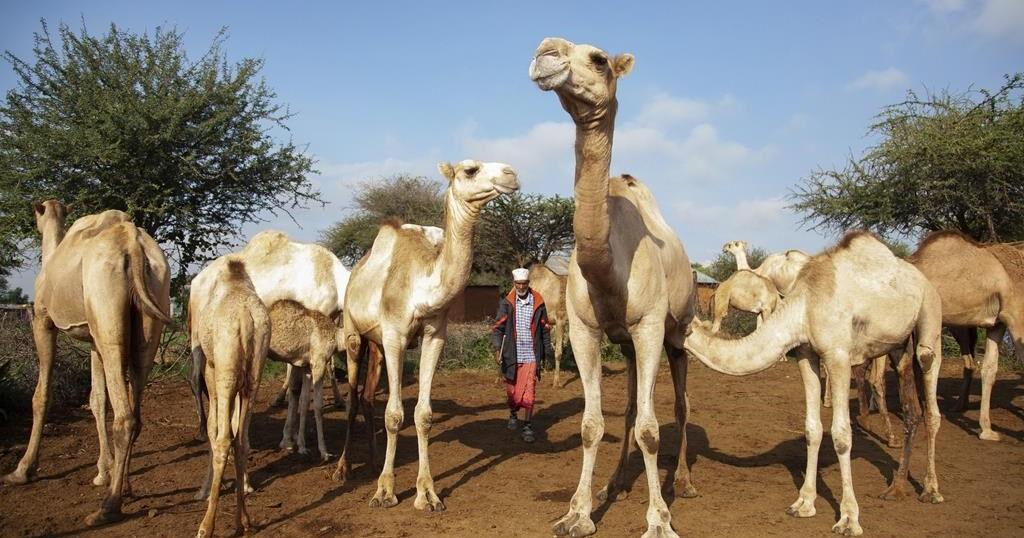KAJIADO, Kenya (AP) — The blood, milk and meat of cattle have long been staple foods for Maasai pastoralists in Kenya, perhaps the country’s most recognizable community. But climate change is forcing the Maasai to contemplate a very different dish: fish.
A recent yearslong drought in Kenya killed millions of livestock. While Maasai elders hope the troubles are temporary and they will be able to resume traditional lives as herders, some are adjusting to a kind of food they had never learned to enjoy.
Fish were long viewed as part of the snake family due to their shape, and thus inedible. Their smell had been unpleasant and odd to the Maasai, who call semi-arid areas home.
“We never used to live near lakes and oceans, so fish was very foreign for us,” said Maasai Council of Elders chair Kelena ole Nchoi. “We grew up seeing our elders eat cows and goats.”
Among the Maasai and other pastoralists in Kenya and wider East Africa — like the Samburu, Somali and Borana — cattle are also a status symbol, a source of wealth and part of key cultural events like marriages as part of dowries.
But the prolonged drought in much of East Africa left carcasses of emaciated cattle strewn across vast dry lands. In early 2023, the Kenya National Drought Management Authority said 2.6 million livestock had died, with an estimated value of 226 billion Kenya shillings ($1.75 billion).
Meanwhile, increasing urbanization and a growing population have reduced available grazing land, forcing pastoralists to adopt new ways to survive.
In Kajiado county near Kenya’s capital, Nairobi, the local government is supporting fish farming projects for pastoralists — and encouraging them to eat fish, too.
Like many other Maasai women, Charity Oltinki previously engaged in beadwork and her husband was in charge of the family’s herd. But the drought killed almost 100 of their cows, and only 50 sheep of their 300-strong flock survived.
“The lands were left bare, with nothing for the cows to graze on,” Oltinki said. “So I decided to set aside a piece of land to rear fish and monitor how they would perform.”
The county government supplied her with pond liners, tilapia fish fingerlings and some feed. Using her savings from membership in a cooperative society, Oltinki secured a loan and had a well dug to ease the challenge of water scarcity.
After six months, the first batch of hundreds of fish was harvested, with the largest selling for up to 300 Kenyan shillings each ($2.30).
Another member of the Maasai community in Kajiado, Philipa Leiyan, started farming fish in addition to keeping livestock.
“When the county government introduced us to this fish farming project, we gladly received it because we considered it as an alternative source of livelihood,” Leiyan said.
The Kajiado government’s initiative started in 2014 and currently works with 600 pastoralists to help diversify their incomes and provide a buffer against the effects of climate change. There was initial reluctance, but the number of participants has grown from about 250 before the drought began in 2022.
“The program has seen some importance,” said Benson Siangot, director of fisheries in Kajiado county, adding that it also addresses issues of food insecurity and malnutrition.
The Maasai share their love for cattle with the Samburu, an ethnic group that lives in arid and semi-arid areas of northern Kenya and speaks a dialect of the Maa language that the Maasai speak.
The recent drought has forced the Samburu to look beyond cattle, too — to camels.
In Lekiji village, Abdulahi Mohamud now looks after 20 camels. The 65-year-old father of 15 lost his 30 cattle during the drought and decided to try an animal more suited to long dry spells.
“Camels are easier to rear as they primarily feed on shrubs and can survive in harsher conditions,” he said. “When the pasture dries out, all the cattle die.”
According to Mohamud, a small camel can be bought for 80,000 to 100,000 Kenyan shillings ($600 to $770) while the price of a cow ranges from 20,000 to 40,000 ($154 to $300).
He saw the camel’s resilience as worth the investment.
In a vast grazing area near Mohamud, 26-year-old Musalia Piti looked after his father’s 60 camels. The family lost 50 cattle during the drought and decided to invest in camels that they can sell whenever they need cattle for traditional ceremonies. Cows among the Samburu are used for dowries.
“You have to do whatever it takes to find cattle for wedding ceremonies, even though our herds may be smaller nowadays,” said Lesian Ole Sempere, a 59-year-old Samburu elder. Offering a cow as a gift to a prospective bride’s parents encourages them to declare their daughter as “your official wife,” he said.
___
Tiro reported from Samburu county, Kenya, and Musambi from Nairobi, Kenya.
___
For more on Africa and development: https://apnews.com/hub/africa-pulse
___
The Associated Press receives financial support for global health and development coverage in Africa from the Bill & Melinda Gates Foundation Trust. The AP is solely responsible for all content. Find AP’s standards for working with philanthropies, a list of supporters and funded coverage areas at AP.org.
